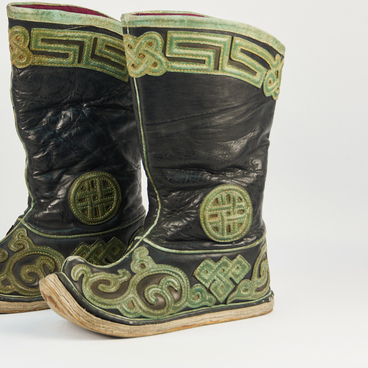The horse was of paramount importance to Tuvan people, just like to all other cattle-breeding peoples of Eurasia.
Tuvans have been breeding the local breed of horses for centuries. They were short, shaggy maned and woolly, extremely hardy and unpretentious.
Tuvans excelled in horseback riding from childhood and were rightly considered to be born horseback riders. Cattle (mainly oxen) were also used as draught animals. The horse was loaded with the help of a special saddle and long hair or leather ropes.
The horseback saddle was adapted for riding in mountainous conditions. There were special pack saddles. Iron stirrups prevailed, while bronze ones were used less often. Leather paired pack sacks, thrown over the saddle, were tied with straps. Despite the hard, rocky ground, horses were usually not shod.
Tuvan people migrated to new pastures four times a year. They moved to a new place with their belongings, using various bags to carry their belongings. The barba large leather bags were filled with millet, barley, flour, seasonal clothing and other items. Small items or foodstuffs were transported in leather saddlebags (taalyn).
The saddlebag on display at the museum is of medium size, with the volume of each compartment reaching about 30 liters. It is made of ox or cowhide of beige color. The edges of the compartment lids and the piece of leather that connects the two compartments are decorated with fine brown leather. The lids of the compartments are small and rather decorative. The bag closes with hinges inserted into each other. The bag is carried in the saddle. Thin leather belt loops are used to fasten it to the saddle. The taalyn is decorated with appliqués featuring national Tuvan patterns.
In the central part of the compartment lids there is a “knot of happiness” pattern (olchei udazyny) with floral motifs in the form of shoot leaves. All the appliqué designs are made of brown leather. The appliqué “knot of happiness” ornament itself is dyed red.





